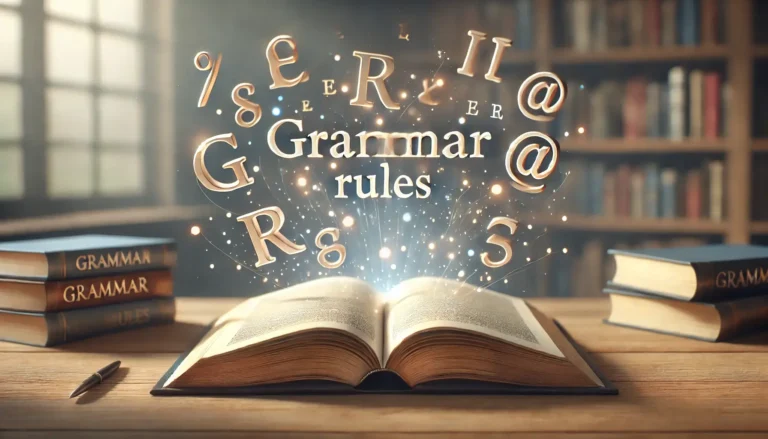In English grammar, words can sometimes serve more than one function, which adds flexibility and variety to how we communicate.
Pronouns and adjectives are typically seen as distinct parts of speech, with pronouns standing in for nouns and adjectives describing or modifying nouns.
However, there are instances where pronouns can function as adjectives and vice versa. In this article, we will explore these instances, explain how they work, and provide examples to help clarify their usage.
What Is a Pronoun?
A pronoun is a word that replaces a noun to avoid repetition or make sentences more efficient. Examples of pronouns include he, she, it, they, who, and someone.
Example:
- John went to the store. He bought some bread.
(Here, “he” is a pronoun that replaces “John.”)
What Is an Adjective?
An adjective is a word that describes or modifies a noun, giving more information about things like size, color, number, or quality. Examples of adjectives include big, red, beautiful, and many.
Example:
- The red apple is on the table.
(In this sentence, “red” is an adjective modifying the noun “apple.”)
Pronouns that Function as Adjectives
There are certain pronouns that can act as adjectives when they directly modify nouns by giving more information about them. These pronouns are often referred to as pronominal adjectives because they take on the role of an adjective while retaining their identity as pronouns.
1. Possessive Pronouns as Adjectives
Possessive pronouns like my, your, his, her, its, our, and their can function as adjectives because they describe ownership or possession of a noun.
Examples:
- This is my book.
(The pronoun “my” functions as an adjective, describing which book.) - They forgot their tickets.
(The possessive pronoun “their” tells us who owns the tickets.)
Here, the possessive pronouns modify the nouns “book” and “tickets,” making them function as adjectives in the sentence.
2. Demonstrative Pronouns as Adjectives
Demonstrative pronouns such as this, that, these, and those can also function as adjectives when they are placed before a noun to specify which noun is being referred to.
Examples:
- I like this movie.
(“This” is a demonstrative pronoun functioning as an adjective, indicating a specific movie.) - Can you pass me those books?
(The pronoun “those” functions as an adjective describing which books.)
In both examples, the demonstrative pronouns are used to describe the nouns “movie” and “books,” identifying specific ones out of a possible group.
3. Interrogative Pronouns as Adjectives
Interrogative pronouns like which and what can function as adjectives when used to ask questions about specific nouns.
Examples:
- Which color do you prefer?
(“Which” is modifying the noun “color,” functioning as an adjective.) - What time is the meeting?
(Here, “what” modifies the noun “time,” acting as an adjective.)
When used in this way, these pronouns don’t just stand in for nouns but serve the function of adjectives by providing more information about the nouns they modify.
4. Indefinite Pronouns as Adjectives
Indefinite pronouns like some, any, each, every, and few can also serve as adjectives when they are placed before nouns to give information about quantity or identity.
Examples:
- There are some cookies left.
(Here, “some” modifies “cookies,” giving more information about how many remain.) - Each student must submit their assignment.
(The pronoun “each” functions as an adjective describing “student.”)
In both cases, the indefinite pronouns modify the nouns that follow them, taking on the role of adjectives.
Adjectives that Function as Pronouns
In some cases, adjectives can function as pronouns when they take the place of a noun in a sentence. These words are often called substantive adjectives because they behave like nouns while still retaining their adjective-like qualities.
1. Possessive Adjectives as Pronouns
Possessive adjectives like mine, yours, his, hers, and theirs can function as pronouns when they replace a noun entirely. While these are still technically possessive pronouns, they serve as adjectives in other contexts.
Examples:
- The book is mine.
(Here, “mine” functions as a pronoun, replacing the phrase “my book.”) - This car is hers.
(The adjective “hers” stands in for “her car.”)
In these cases, possessive adjectives are used as stand-alone pronouns to indicate ownership without repeating the noun.
2. Demonstrative Adjectives as Pronouns
Demonstrative adjectives like this, that, these, and those can also function as pronouns when they replace nouns.
Examples:
- I like this.
(“This” stands in for a specific object, acting as a pronoun.) - Those were delicious.
(Here, “those” replaces the noun “cookies” or “cakes,” acting as a pronoun.)
In both sentences, the demonstrative adjectives take the place of a noun and serve as pronouns, referring to specific things.
3. Quantitative Adjectives as Pronouns
Quantitative adjectives like many, few, several, and some can function as pronouns when they replace nouns in a sentence.
Examples:
- I took many.
(“Many” replaces “many books,” acting as a pronoun.) - Few have arrived.
(Here, “few” stands in for “few people,” functioning as a pronoun.)
When used in this way, these adjectives not only describe quantity but also stand in for nouns, making them act as pronouns.
Conclusion
While pronouns and adjectives have different core functions in language, they sometimes overlap in their roles. Pronouns can function as adjectives when they modify nouns, and adjectives can function as pronouns when they replace nouns entirely.
Understanding this relationship adds flexibility and precision to both written and spoken language, helping to avoid repetition and make sentences more concise.
Whether you’re using demonstrative pronouns to specify something or possessive adjectives to show ownership, recognizing these dual roles will improve your communication skills and deepen your understanding of grammar.
By mastering how pronouns and adjectives can switch functions, you can enhance the clarity and effectiveness of your writing and speech!







